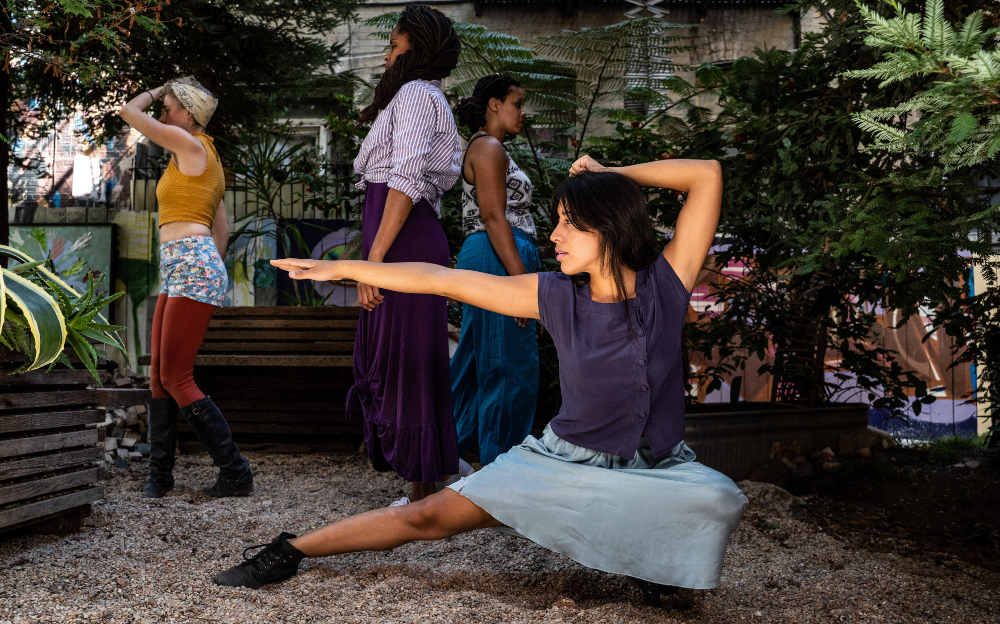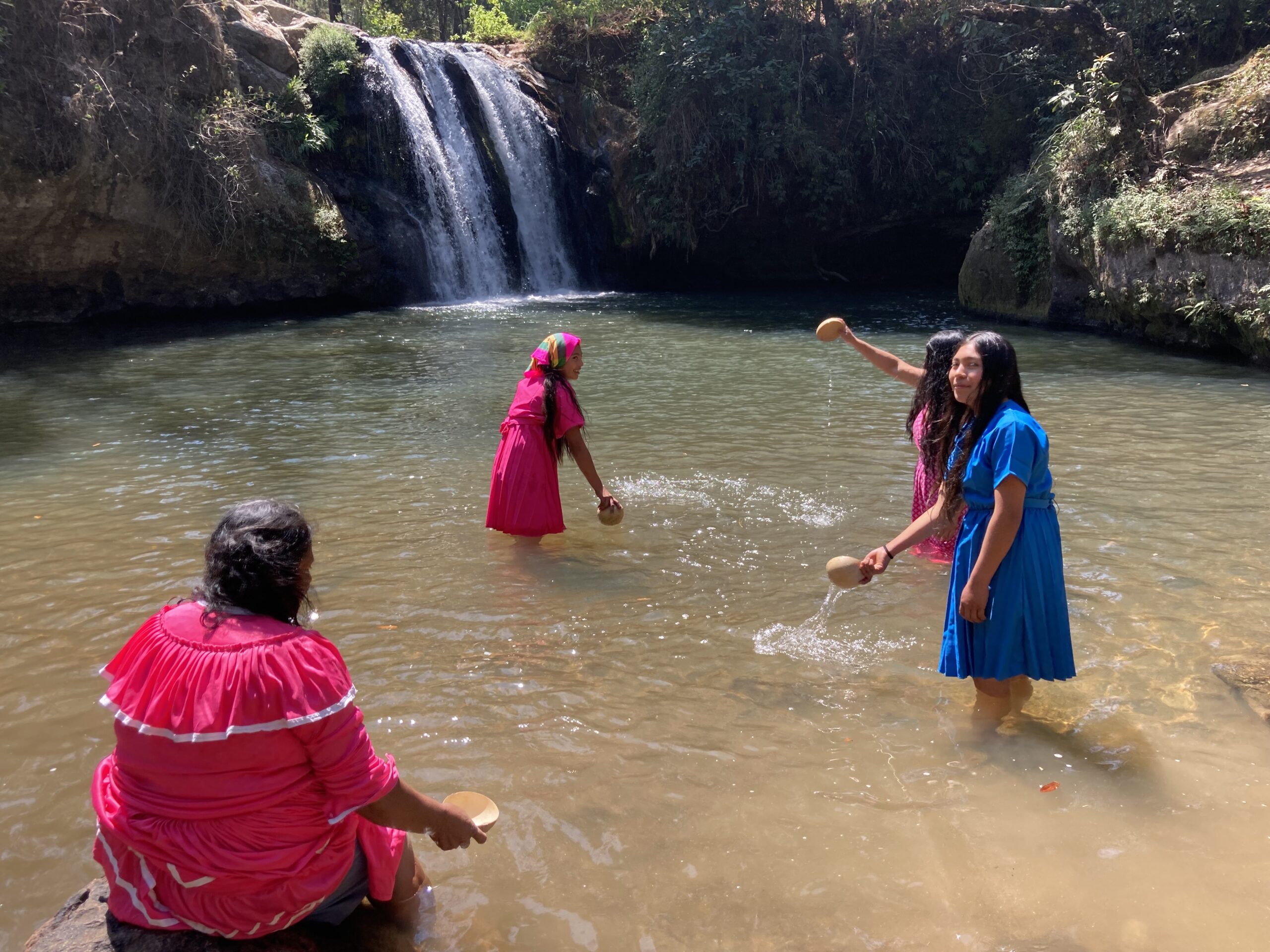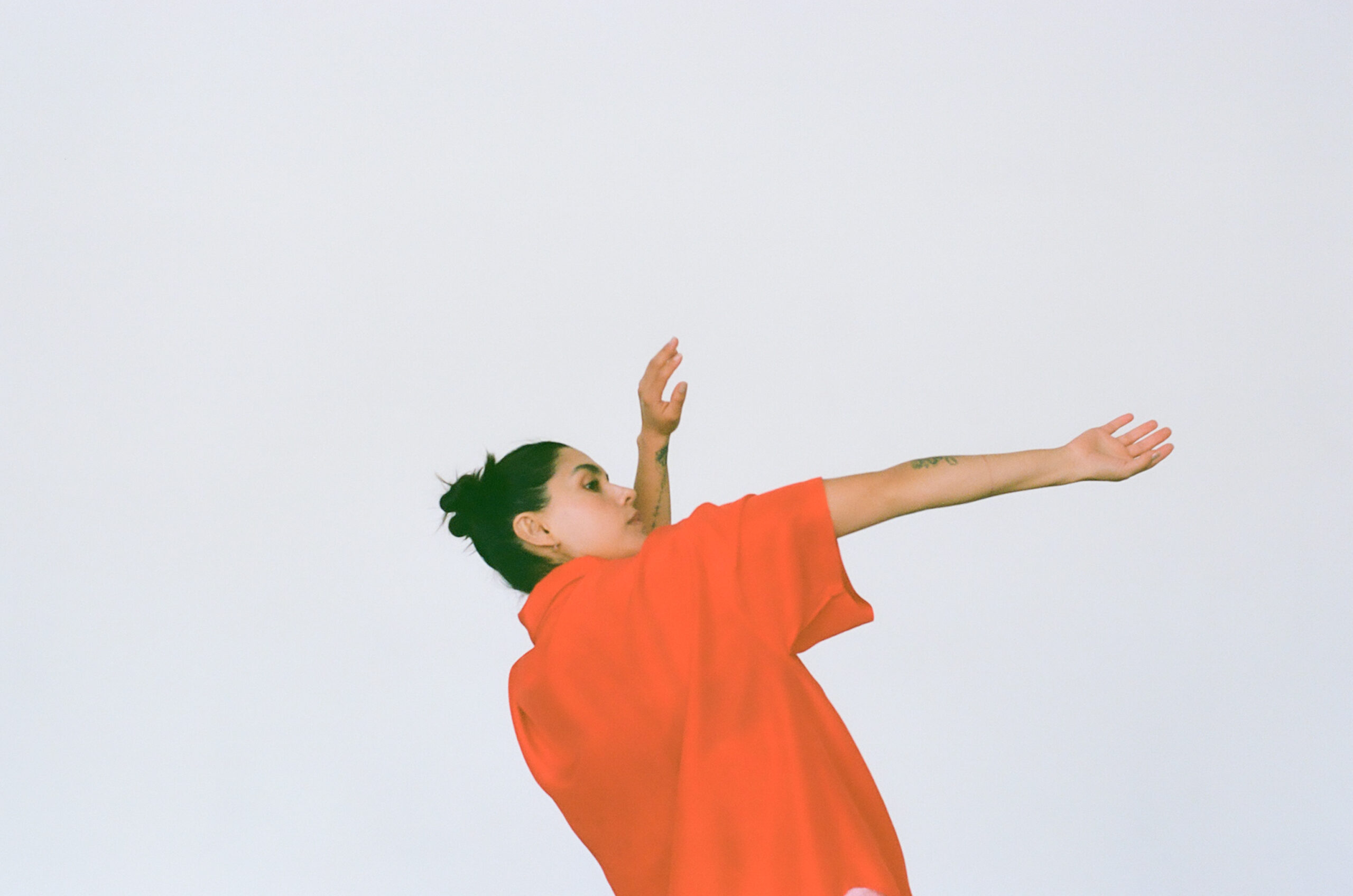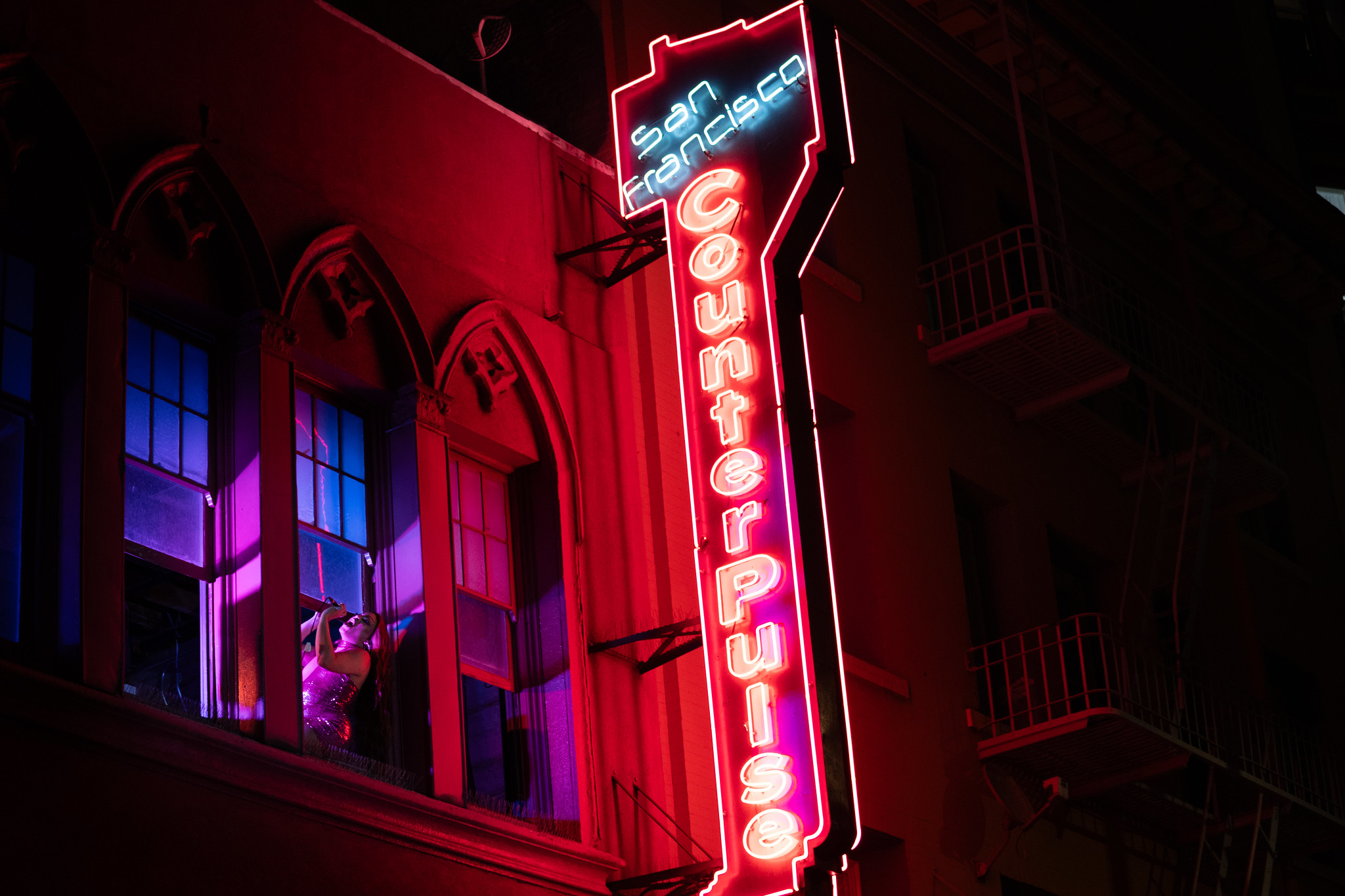In 2006, I hosted my first audition for Cherie Hill IrieDance performers. I desired an all-black female cast. I yearned to deepen my self-knowledge of being a black woman making dance and to analytically understand how aesthetics relate to white and black culture.
In 2014, I looked for something different. I sought movers who could translate my visions and directions into improvisation and choreographic phrases, and who possessed training in contemporary plus African Diaspora forms. And just as importantly, their schedules had to fit. I found a beautiful mix of dancers with varied backgrounds in race, color, age, and body types. I created unique projects with them, including abstracting dub reggae music concepts into dance sequences. At that time, I didn’t feel pressed to create gestures and stories around particular racial identity.
 In She-Verse, a multimedia piece inspired by drifting water, land, ancestors, bravery, and ecofeminism, I am working with a racially and culturally mixed cast. My choreography investigates intersections between traditional and contemporary dance, the earth and the female body, and the treatment of women to the treatment of land. Dancers’ stories include movement related to #metoo. The colonization of the Caribbean Islands and the survival tactics we need to exist in a world afflicted by oppression and the adverse effects of climate change are topics explored.
In She-Verse, a multimedia piece inspired by drifting water, land, ancestors, bravery, and ecofeminism, I am working with a racially and culturally mixed cast. My choreography investigates intersections between traditional and contemporary dance, the earth and the female body, and the treatment of women to the treatment of land. Dancers’ stories include movement related to #metoo. The colonization of the Caribbean Islands and the survival tactics we need to exist in a world afflicted by oppression and the adverse effects of climate change are topics explored.
To prep I read The Tears of the Indians: Being A Historical and True Account of the Cruel Massacres and Slaughters of above Twenty Million of Innocent People (1656), Women Who Run With the Wolves: Myths and Stories of the Wild Woman Archetype, Mess: The Manual of Accidents and Mistakes, and numerous articles on ecofeminism for my research. In rehearsals, we spoke about time and the middle space, how nature does not run on man-made time. One rehearsal spent 45 minutes performing a moving meditation on sand, and at others, we broke down elements of dances Sonsorne and Dinki Mini.
My reading of The Tears of the Indians left an impact. The violence that De Las Casa explains against the indigenous people is unbelievable, insane, and cold-blooded. I felt an urge to bring my responses into the piece. With one dancer, I crafted a collaborative solo with fabric that evolved into a quartet. But that did not feel like enough. I wanted actual words from the book to be heard.

To these quiet lambs, endued with such blessed qualities, came the foreigners like most cruel tigers, wolves, and lions, enraged with a sharp and tedious hunger; for these years past, minding nothing else but the slaughter of these unfortunate persons, they have so cruelly and inhumanely butchered that of three millions.
Brizion, our music composer, layered and faded their voices, adding synthesizers and other effects. I created a series of repeated movements for the dancers to do together.
Brake! I show the piece in progress to my Performing Diaspora mentor. He offers, “What about the light-skinned body in the space? How does she relate to this colonial narrative?” I separate and pull the dancer into solo movements. I don’t wish to be stereotypical, and she has gestures from personal experience that I feel match the energy of the section. I tell her to do those here. We show at the November Work-in-Progress event.
Stop! There is still tension with the choreography of the white dancer against the story being told. How are everybody’s ancestral roots thought about in the piece? Including the dancer with the lighter skin. It’s missing the social commentary.
These responses are to my question of how identity and race play out in the piece. I think, “Damn,” I am not sure how to reconcile this through choreography. I think about race and privilege within equity conversations and teaching pretty seamlessly, but not so much with my dance-making. I ponder. Do I shy away or confront? I choose the latter. To confront while resisting stereotypes. To search for the authentic version that serves both dancer and the work. In my dancer notes, I write to her:
Think about how listening to the text makes you feel. What are the responses you have to the passage through your body? What does listening to the story do to you? Internally, how does this history make you feel? What gestures represent these feelings?
The challenge is stretching me, causing me to dig deeper into what equity in art-making means in this new way. At this point, I do not have a clear answer on how to manage the white colonial story, without making someone represent a person they are not. We continue to experiment, and there are two weeks until the show. The positive side is that already, there is growth in this force to sit in the space of uncertainty and to try many things until it feels and looks right. I get the feeling that the puzzle may not piece together until the last second, but my gut tells me we will get there. I invite you to come, witness, and be a part of the journey.
She-Verse runs December 5-7, and 12-14, 2019 as part of Performing Diaspora 2019.
Photo of the cast from left to right, Lashon Daley, Rose Rothfeder, Andreina Maldonado, & Cherie Hill by Robbie Sweeny at the Tenderloin National Forest.
Share This!
More Good Stuff
CounterPulse ARC Edge Resident Diana Lara's "Savia~Sap flow: Embodied Connection with Ancestry and Nature" opens June 6-7 & 13-14, 2024 Get your tickets here
CounterPulse ARC Edge Resident gizeh muñiz vengel's "auiga" opens June 6-7 & 13-14, 2024 Get your tickets here! View the show program photo by
In a landmark declaration of support for the arts in San Francisco, State Assemblymember Matt Haney has pushed CounterPulse to the finish line of their




